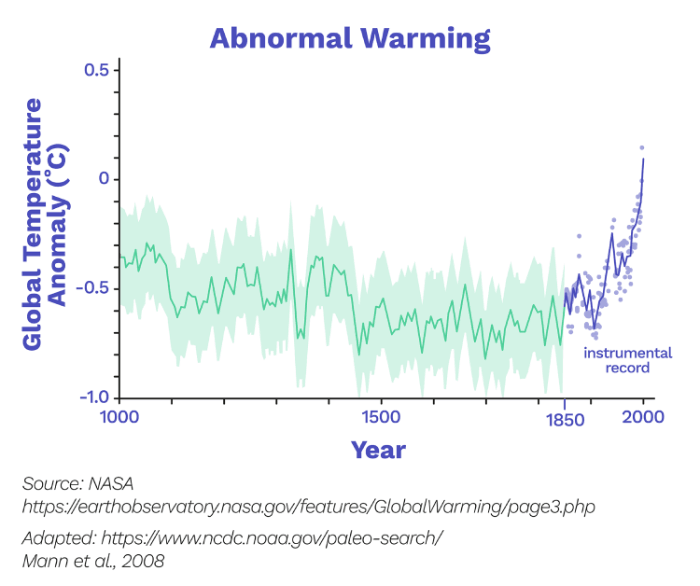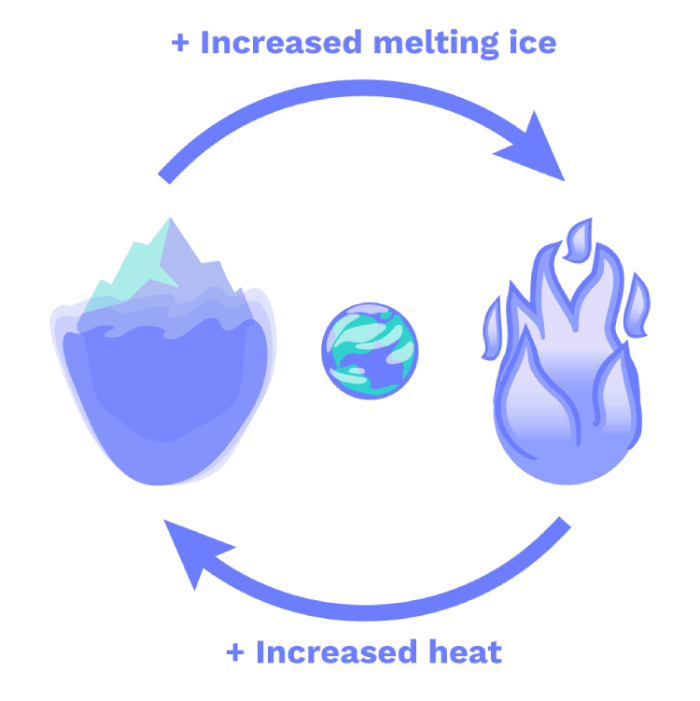For the past 250 years, humans have been releasing greenhouse gases into the atmosphere , which has caused the Earth to warm by roughly 1.1°C
, which has caused the Earth to warm by roughly 1.1°C !
!
As the planet warms, melting ice, thawing permafrost, and other responses from the Earth itself will make temperatures rise even more (take a look at the chapter on feedbacks for more on this)
 .
.
Why are we worrying about climate change today?
Greenhouse gases and positive feedbacks are causing the Earth to warm unusually quickly . Over the past century it has warmed about 10 times faster than the average increase in temperature after every ice age
. Over the past century it has warmed about 10 times faster than the average increase in temperature after every ice age .
.
Despite there also being rapid and large changes in temperature in the distant past
 , current global warming is dangerous because humans have not experienced changes of this scale and speed before
, current global warming is dangerous because humans have not experienced changes of this scale and speed before , so it will be challenging for us to adapt
, so it will be challenging for us to adapt
 .
.
For example, the last time Earth’s average temperature reached 4.5°C above the pre-industrial levels was 5 million years ago . Back then, humans
. Back then, humans and even mammoths
and even mammoths had not evolved yet!
had not evolved yet!
Realistically, how are temperatures going to change under current policy?
How much greenhouse gas we release depends mainly on how much energy we use and on how it is produced
 .
.
These factors are dictated by politics, economics
 , population size and energy use per person.
, population size and energy use per person.
As part of the Paris Agreement, every country pledged to limit global temperature rise to well below 2°C above pre-industrial levels, and preferably below 1.5°C
 .
.
However, if we look at the promises made by countries to reduce greenhouse gas emissions, currently over 7 out of 10 countries won’t succeed in achieving their Paris Agreement pledges ! On average, emission reduction promises must become 5 times more effective within the next decade to keep temperatures below 1.5°C
! On average, emission reduction promises must become 5 times more effective within the next decade to keep temperatures below 1.5°C

 .
.
Many scientists believe we have little hope of restricting global warming to 1.5°C or even 2°C




 .
.
In fact, if global warming continues at its current rate, there is a 66% chance that we will reach 1.5°C of warming between 2030 and 2052
 .
.
But global warming is actually getting faster and faster , so drastic action must be taken now to reduce emissions to limit these rising temperatures
, so drastic action must be taken now to reduce emissions to limit these rising temperatures
 .
.
You’ll learn more about the solutions to this problem in later courses!
Next Chapter. These predictions, along with a range of possible results, are shown in the graph below
.
. It’s estimated that this would cause 4.5°C of global warming by 2100
.
and become roughly constant at 15Gt per year after 2080
, the light blue line is more likely. This corresponds with 2.5°C of warming by 2100
.
are put into place during 2020
. This would still cause 1.6°C of global warming by 2100
.





